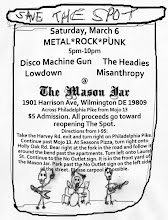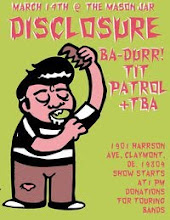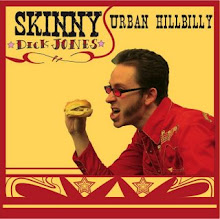Growing up in Wilmington in the 1980's the Christina riverfront south of the city wasn't somewhere I was allowed to go. And for good reason: it was primarily old abandoned heavy industrial land. Brownfields, polluted and contaminated, and long since thriving factories and warehouses had become havens for the drug industry. The area had been ignored and written off for decades, and the notorious, very low-income neighborhood of Southbridge abuts the riverfront to the east and lies in the 100 year flood plane, which made it even less desirable.
The first step of the riverfront's turn around happened when the Peninsula Pilots baseball team was purchased and relocated to the west side of the riverfront as the Wilmington Blue Rocks in 1993. Legends Stadium was one of the first new structures built on the Christina in decades, and by the time it had been renamed Frawley Stadium in 1994, they had a new neighbor. Across the river on the south side, Ed Osbourne opened his auto service store and garage at 104 A Street. The Osbornes had reservations about opening the shop in such a high-crime area, and one that falls in the flood plane at that. But failure was not an option, and over the past fourteen years, Ed Osbourne has watched the riverfront development grow up around him and right up to his front door.
With no powers of annexation, Wilmington's best bets for keeping up with and excelling alongside the other eastern seaboard metropolises is to expand both upward and southward. High rise buildings provide ample housing and enhance a city's skyline. Wilmington, south of the Christina, is comprised of Southbridge to the east, currently the focus area for the South Wilmington Special Area Management Plan and recipiants of a HOPE VI grant for proposed revitalization, and to the west, running along the river, was primarily long unused land, but not entirely unused.
The west side of the river grew first, emanating out from Frawley Stadium. Over the next few years restaraunts, night clubs, museums, and ING's building filled the previously unused space. Most recently Juniper Bank built Christina Crescent, now the Barclay Building, and AAA moved their Mid-Atlantic headquarters to the area. The first structures to go up on the south side, built between 2004-2008, were the Residences at Christina Landing (twenty-two floor apartment building with retail at the base), the Town homes at Christina Landing (63 community designed townhouses), and the majestic River Tower (twenty-three floor condominiums.) These were all built by the Buccini-Polin Group, a real estate and developing company whose owners, decision makers, and namesakes are all native to Greenville and Centerville areas directly to the west and northwest of Wilmington. BPG made a big splash in Wilmington with their swift and impressive construction of the WSFS building at 500 Delaware Avenue in the city's business district. Next on the agenda for the Buccini-Polin Group is another complex of town homes on the west side of the river called Justison Landing, which are nearing completion, and the complete revitalization of Market Street, the main corridor between the business district and the riverfront. The idea being to convert Market Street into a mixed use retail/residential, or "live, work, and play" community. Nearest to the river, the Ships Tavern District stretches roughly from Martin Luther King Jr. Boulevard, north to Fourth Street, and is named after the former inn on the site where revolutionary greats George Washington, John Adams, and Thomas Jefferson all stayed while in Wilmington. Lower Market, or LOMA as the development signs refer to it as, runs roughly from Third Street north to Fifth Street and is the proposed "design district," aimed at creative professionals such as architects, advertising agencies, fashion and graphic designers, and artists. Willington Square, Old Town Hall, and the Delaware Historic Society are Fifth to Sixth Streets and the Delaware College of Art and Design and its' Saville Apartment dormitories are Sixth to Seventh. Various fine dining establishments take you into the business district, with the fashion district stretching from Tatnall to King Streets along Ninth Street, a block south of the main concrete canyon in the business district. As of today, the two hundred block of Market is done; beautiful and ready for business, though not all occupied yet. When the project is complete, the core of the city should ideally radiate health and the surrounding streets should see improvement too, and outward and onward. While this is all going on, BPG also have their eyes turned southward.
The proposed South Walnut Street Renovation Plan would continue south of Christina Landing and require the use of sixty-two properties currently owned on the site. Most of them are long out of use, but the one that faces Christina Landing, twenty feet away across A Street, houses Osborne Auto Service, and has done so for the past fourteen years. When the land was near worthless, Osborne forged a successful livelihood and supported his family with his honest work. A real mom and pop ethic, it's a family business. "My son's worked for me for fifteen years, and I'm gonna give him the business one day," says Mr. Osborne of his son Ed Jr. Osborne is all for development and revitalization, he comments, "They could build a hundred floors on top of me if they let me have my garage on the ground floor, a place for people to bring their cars that's safe." The issue is one of fair trade. Ed's wife Cyndy Osborne has drafted a letter addressing the issue on the business' web site, www.osbornesauto.com in which she explains. "Larger businesses in the Wilmington riverfront area were purchased by the developer before the City proposed the plan to condemn the 62 smaller property owners. Why wasn't the free market system (an interested seller versus a willing buyer) employed for all involved?" Clearly Mrs. Osborne sees this as a classist issue, and a slippery slope at that, where anything imaginable can warrant taking property, if the denizens can't afford to legally object. An organization called the Institute for Justice has a site dedicated to helping people across the country with this situation (www.ij.org).
The point of contention is Wilmington Mayor James Baker and the city's desire to enact eminent domain on all sixty-two properties in question. No formal offer has ever been made, according to Mr. Osborne, by either the city or the Buccini-Polin Group to purchase his crucial property. The first he heard, officially, was when he received a condemnation notice from the city. The city believes that it has the right to use eminent domain to condemn the property for "public use" as stated in the fifth amendment. Originally drafted to protect the right of cities and states to build railroads where they needed them, even over privately owned farmland, as it needs to be claimed for "public use." If land was taken for public use, then it must be fairly compensated for.
Wilmington citizens have a distaste for the use of eminent domain, as it was used in the 1950's in the name of "urban renewal" which razed seventy-two blocks in Wilmington's East Side, eradicating stable African-American neighborhoods and displacing hundreds of people and families with little attempt at relocation. Eminent domain was used a decade later to raze all the properties between Jackson and Adams Streets to build I-95. Though this massive roads project was an inevitability, it's placement through the middle of the city, and temporal proximity to the 1968 riots following Dr. Martin Luther King Jr.'s assassination and the subsequent occupation of Wilmington by the National Guard started a ripple effect that would cause both black and white Wilmington residents to relocate themselves, dropping city population by more than 40,000 by the 1970's. Whether or not the city government acted unscrupulously then or whether they were within their civil and moral rights is a question for social and economic historians.
Right now, Mr Osborne's claim is that the city is violating his fifth amendment rights in two ways: one, they are not offering him fair compensation. In 2004, when investors first attempted to purchase Osborne's property for a different development project, the "fair market value" was $225,000. Not nearly enough to start a new business in the current real estate market, nor nearly what the prospective value of the property might be. Second, the so-called "public use" this time would be private developers building the South Walnut Street Neighborhood. "Public use" is supposed to be a restraint against the misuse of eminent domain, but its' meaning has gotten blurred to the point of meaninglessness, able to be skewed to suit whatever purpose is needed at the time. Similar misuse of the term "public use" has been disputed and found in favor of the defendant in the landmark 2005 case of Kelo vs. the City of New London, in which the court determined that such development qualifies as public use. The decision was widely criticized, and recently a Senate Bill 245 was proposed in Delaware to give clearer and stricter restrictions to Wilmington's eminent domain powers, subsequently giving property owners like Osborne a fighting chance. It could also hamper desired development in other areas. Governor Ruth Anne Minner vetoed the bill, siding with what she saw as the developer's rights. On June 28, a motion to overturn the veto was voted on, and with the majority supporting the bill earlier in the month, it seemed it would pass. However, several members changed their opinion since that time and the motion failed to pass 11 to 9. A site dedicated to informing the public about the senators who changed their vote is called www.deflipflop.org and it urges supporters to petition certain representatives and vote out others in the 2010 election.
The central issue is Osborne's claim that the condemnation is unconstitutional. "It comes down to whether people own their property or not," he claims. It is also about the interpretation of "public use" as "public purpose." However, as it stands right now in light of Kelo vs. City of New London, that argument is less effective. Still, eight states have since passed legislature that amends Kelo, making property rights stronger and restricting eminent domain influence of commercial developers. These cases are the models that Osborne and his supporters will point to when they try and overturn the veto again next year. In the meantime, they gain support from the community. When asked how the publicity has affected business, Ed Osborne said, "The economy is bad, so people have been more reluctant to buy new cars, so that's good for business, but today I got a new customer all the way from Newport. He thinks we're doing the right thing, wanted to show his support, and got his car fixed while he was here!" All in all, the Osbornes do not want to halt development, just their fair share for believing in property that no one else did for so long. As Mrs. Obsorne puts it, "we do not seek extraordinary compensation – only another location in or near the development area."
*As of press time, neither the city nor BPG had responded to my request for comment. Given a four-day window, city employee John Rago had promised me answers and has not supplied them. BPG had no interest, or apparently ability to comment. No one at their office who knew anything would speak to me. Both parties were contacted via phone and e-mail.*
Claudia Boulton
7 years ago








































































































No comments:
Post a Comment